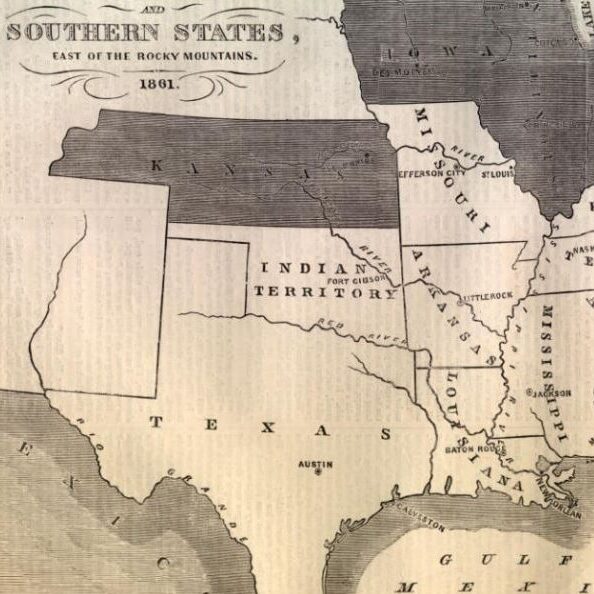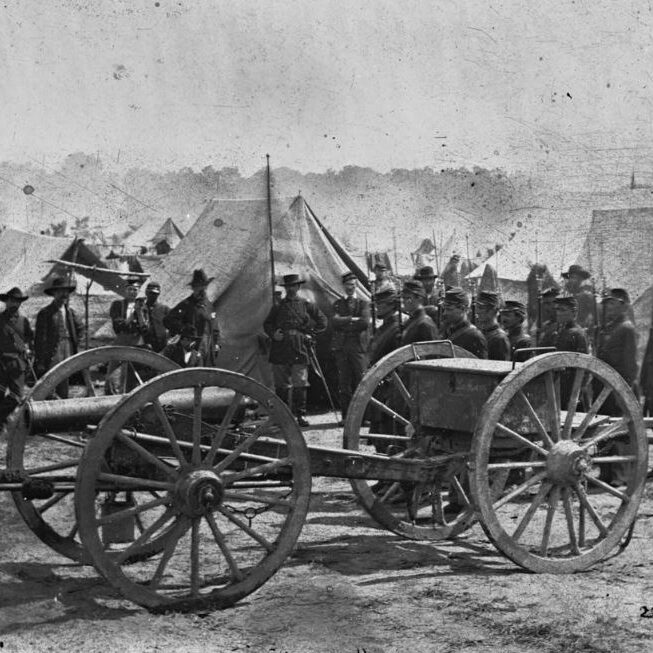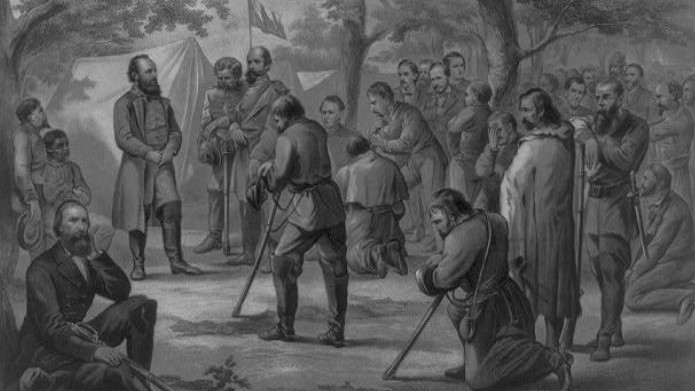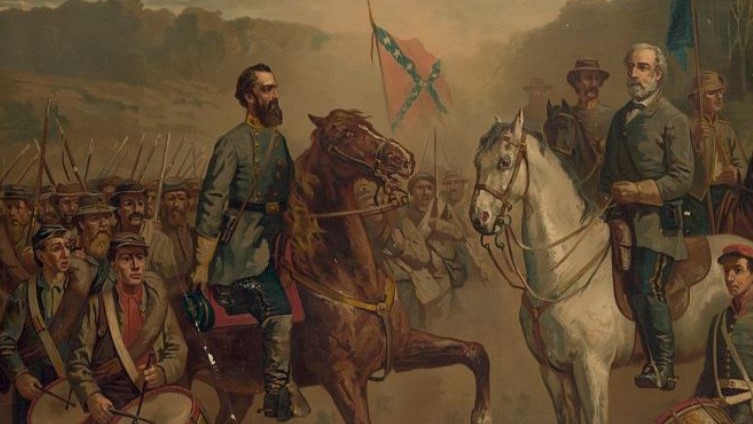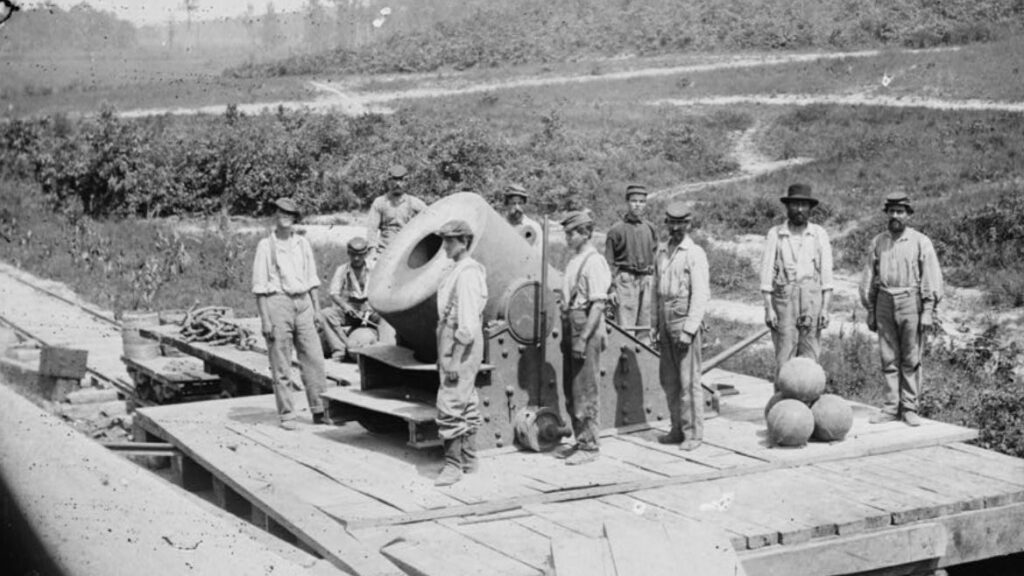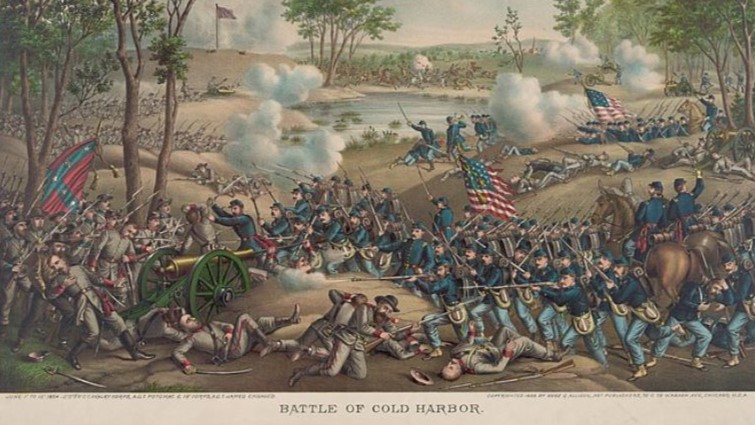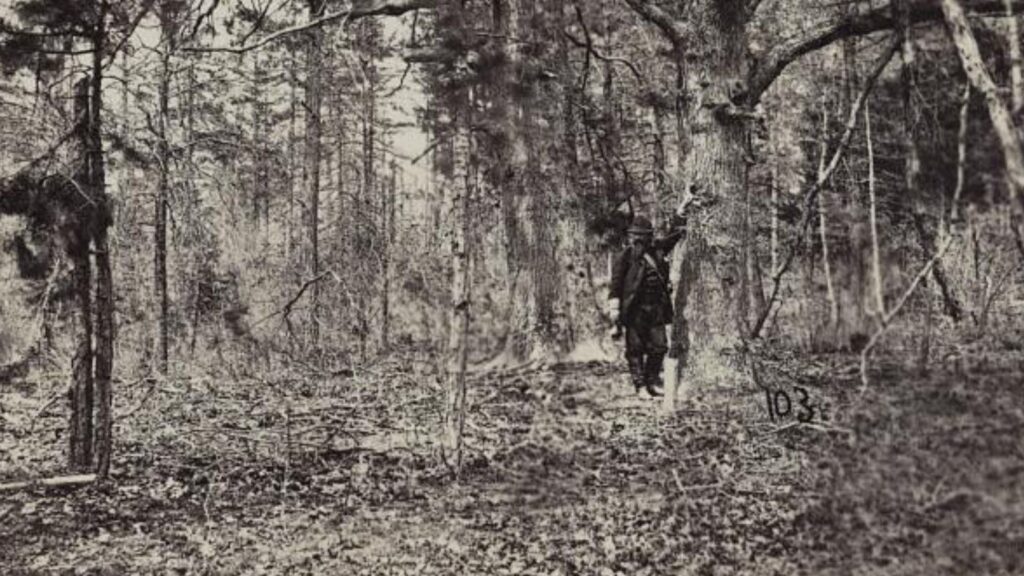Were there any Civil War Battles in Oklahoma? Oklahoma’s role in the Civil War was far from ordinary. While not a state yet, the Indian Territory became a crucial battleground, fought over by Union and Confederate forces alongside Native American allies.
This complex conflict saw tribes choosing sides, logistical nightmares for the Union, and a turning point battle at Honey Springs.
Read on to discover how this unique Civil War chapter unfolded, from tribal alliances to the last Confederate surrender, and its lasting impact on the land that became Oklahoma.
- 1. Oklahoma's role in the Civil War
- 2. The Civil War Battles in Oklahoma
- 3. Battle of Round Mountain (November 19, 1861)
- 4. Battle of Chusto-Talasah (December 9, 1861)
- 5. Battle of Chustenahlah (December 26, 1861)
- 6. Battle of Locust Grove (July 3, 1862)
- 7. Battle of Old Fort Wayne (October 22, 1862)
- 8. Tonkawa Massacre (October 24, 1862)
- 9. First Battle of Cabin Creek (July 1–2, 1863)
- 10. Battle of Honey Springs (July 17, 1863)
- 11. Battle of Perryville (August 23, 1863)
- 12. Battle of Middle Boggy Depot (February 13, 1864)
- 13. Ambush of the Steamboat J. R. Williams (June 15, 1864)
- 14. Second Battle of Cabin Creek (September 19, 1864)
- Further Reading
1. Oklahoma’s role in the Civil War
Oklahoma’s role in the American Civil War was intricate, as the region, then designated as the Indian Territory, became a crucial theater of conflict.
The Indian Territory was inhabited by Native American tribes that were relocated from the Southeastern United States.
The territory witnessed a unique set of alliances and confrontations during the Civil War. The majority of tribal leaders sided with the Confederacy, contributing over 7,750 Native Americans to the Confederate Army. In response, the Union formed the Indian Home Guard, enlisting Native Americans loyal to the Union.
Logistical challenges added complexity to the conflict. The Union faced difficulties in navigating the sparse infrastructure and roads while attempting to regain control of the territory.
Pro-Union Indians abandoned their farms, often seeking refuge in Kansas or Missouri.
Oklahoma experienced a series of battles and skirmishes, including the significant Battle of Honey Springs in 1863, where the Union secured control of the Indian Territory, leading to a subsequent guerrilla warfare.
The aftermath of the war saw the surrender of the last Confederate general, Stand Watie, in 1865, concluding hostilities in the Indian Territory.
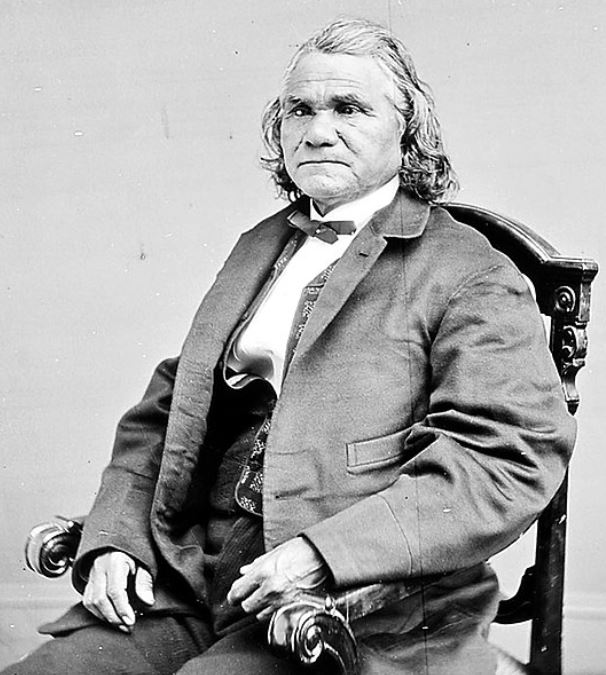
Reconstruction Treaties imposed land concessions on tribes and mandated the emancipation of slaves. The legacy of the conflict endured as the Indian Territory eventually transformed into the state of Oklahoma 42 years after the war’s end.
2. The Civil War Battles in Oklahoma
| Battle Name | Generals | Location | Date | Casualties | Winner |
| Battle of Round Mountain | Douglas H. Cooper (CSA), Indians Loyal to the Union | Near Keystone or Yale | November 19, 1861 | 110+ | Confederate States of America |
| Battle of Chusto-Talasah | Douglas H. Cooper (CSA); Opothleyahola | Near modern Tulsa | December 9, 1861 | 550+ | Confederate States of America |
| Battle of Chustenahlah | Douglas H. Cooper (CSA); Opothleyahola | Near modern Skiatook | December 26, 1861 | 300+ | Confederate States of America |
| Battle of Locust Grove | William Weer (USA), James J Clarkson (CSA) | Locust Grove | July 3, 1862 | 209 | Union |
| Battle of Old Fort Wayne | Douglas H. Cooper (CSA); James G. Blunt (USA) | Fort Wayne | October 22, 1862 | 165 | Union |
| Tonkawa Massacre | Osage vs Tonkawa | Modern Caddo County | October 24, 1862 | 137-150 | Osage |
| First Battle of Cabin Creek | James Williams (USA), Stand Watie (CSA) | Modern Mayes County | July 1–2, 1863 | 100+ | Union |
| Battle of Honey Springs | Douglas H. Cooper (CSA); James G. Blunt (USA) | Modern Muskogee County & McIntosh County | July 17, 1863 | 700+ | Union |
| Battle of Perryville | William Steele (CSA), James Blunt (USA) | Near modern Chambers | August 23, 1863 | 49 | Union |
| Battle of Middle Boggy Depot | William A. Phillips (USA), Douglas H. Cooper (CSA); | Near modern Allen | February 13, 1864 | 47 | Union |
| Ambush of the steamboat J. R. Williams | Stand Watie (CSA); Horacde Cook (USA) | Near modern Tamaha | June 15, 1864 | 10 | Confederate States of America |
| Second Battle of Cabin Creek | Henry Hopkins (USA), Stand Watie (CSA) | Near modern Pensacola | September 19, 1864 | 85+ | Confederate States of America |
3. Battle of Round Mountain (November 19, 1861)
Confederate Victory
The Battle of Round Mountain marked an early conflict in the American Civil War, part of the Trail of Blood on Ice campaign in Oklahoma.

Its primary objective was to prevent Union supporters of the Creek Nation, led by Opothleyahola, from fleeing Indian Territory to seek refuge with Union forces in Kansas.
Taking place on November 19, 1861, the engagement had a disputed location. Although details are unclear, Confederate forces claimed victory with minimal casualties.
Despite the small scale, this clash set the tone for subsequent campaigns in Indian Territory, showcasing the strategic importance of the region in the broader context of the Civil War.
4. Battle of Chusto-Talasah (December 9, 1861)
Confederate Victory
The Battle of Chusto-Talasah unfolded near modern Tulsa on December 9, 1861, during the Trail of Blood on Ice campaign in the American Civil War.
The battle pitted Confederate Cherokee and Choctaw Indians against Union Creek and Seminole Indians, led by Chief Opothleyahola, who supported the Federal government.
Chief Opothleyahola’s forces, having retreated northeastward after a previous defeat at Round Mountain, took a strong defensive position at Horseshoe Bend of Bird Creek.
Confederate Colonel Douglas H. Cooper led a force of 1,300 Confederates against Opothleyahola’s Union troops.
The Confederates claimed victory, while Opothleyahola and his forces moved on in search of security elsewhere.
5. Battle of Chustenahlah (December 26, 1861)
Confederate Victory
The Battle of Chustenahlah, occurring near modern Skiatook on December 26, 1861, was a pivotal engagement in the Trail of Blood on Ice campaign during the American Civil War.
Confederate troops aimed to subdue Native American Union sympathizers and consolidate control in Indian Territory.
The Confederates, under Col. James M. McIntosh and Col. Douglas H. Cooper, planned a combined attack from different directions.
McIntosh attacked despite being outnumbered and facing severe cold weather conditions.
The Confederate forces utilized various strategies, including a direct charge up a steep bluff by the South Kansas-Texas Cavalry.
The battle resulted in the retreat and eventual rout of the pro-Union Native Americans, who fled to Kansas.
Col. Stand Watie intercepted fleeing Creek and Seminole, resulting in further casualties for the Union forces.
The Confederate victory led to the capture of significant supplies and casualties among the Union Native Americans.
6. Battle of Locust Grove (July 3, 1862)
Union Victory
The Battle of Locust Grove, fought near present-day Locust Grove on July 3, 1862.
Approximately 250 Union troops under Colonel William Weer surprised around 300 Confederate troops commanded by Colonel James J. Clarkson.
The Confederates, caught off guard, were unable to form a battle line and were quickly dispersed into a thicket of locust trees. The skirmish resulted in around 100 Confederate soldiers killed and about 100 wounded or captured, with their commander among the prisoner
After the battle, Union forces divided captured supplies among various units and proceeded to Flat Rock.
Colonel William Weer would later be arrested for misappropriation of prisoner funds, drunkenness, and neglect of duty, leading to his conviction and expulsion from the army.
7. Battle of Old Fort Wayne (October 22, 1862)
Union Victory
The Battle of Old Fort Wayne, also known as Maysville, Beattie’s Prairie, or Beaty’s Prairie, was a significant American Civil War battle on October 22, 1862.

Confederate Major General Thomas C. Hindman ordered Colonel Douglas H. Cooper and his Indian Brigade to hold Newtonia, Missouri, but they were forced to retreat to Indian Territory after skirmishes with Union forces.
The Union Army regained control of Indian Territory north of the Arkansas River.
8. Tonkawa Massacre (October 24, 1862)
The Tonkawa Massacre, taking place on October 24, 1862, in modern Caddo County, was a tragic event during the American Civil War. It involved a brutal attack by the Osage tribe on the Tonkawa people, aligned with the Union.
The massacre resulted in the death of approximately around 150 Tonkawa tribe members, including Chief Ha-shu-ka-na. This devastating episode illustrated the complex alliances and hostilities between Native American tribes during the Civil War, reflecting the broader challenges faced by indigenous communities caught in the midst of the conflict in Indian Territory.
It occurred after an attack on the Confederate-held Wichita Agency located at Fort Cobb in present-day Oklahoma. A detachment of irregular Union Indian troops attacked the agency, home to Tonkawa tribe members sympathetic to the Confederacy.
The Tonkawa fled towards Confederate-held Fort Arbuckle but were caught on October 24, leading to a massacre.
The massacre led to the demoralization and fragmentation of the Tonkawa tribe.
9. First Battle of Cabin Creek (July 1–2, 1863)
Union Victory
The First Battle of Cabin Creek, occurring on July 1–2, 1863, was a significant engagement during the American Civil War in modern Mayes County, Oklahoma.
The First Battle of Cabin Creek, fought during the American Civil War in 1863, marked the first instance of African American troops fighting alongside their white counterparts.
Confederate forces, led by Colonel Stand Watie, attempted to ambush a Union supply convoy under Colonel James Monroe Williams.
Williams, despite the swollen creek due to rain, successfully attacked the entrenched Confederate position, forcing them to flee.
The Union victory ensured the continuation of their presence in Indian Territory, enabling later victories at Honey Springs and Fort Smith.
10. Battle of Honey Springs (July 17, 1863)
Union Victory
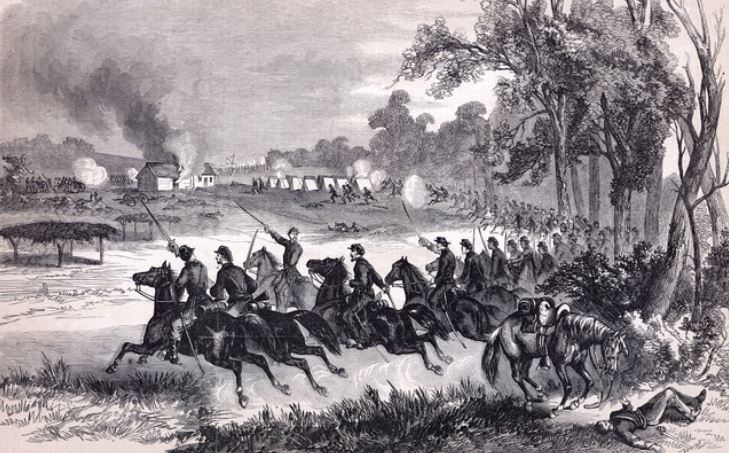
The Battle of Honey Springs, fought on July 17, 1863, was a significant engagement during the American Civil War, resulting in a Union victory. It was notable for being the largest confrontation in what would eventually become Oklahoma.
Native American troops were significant participants in both the Union and Confederate forces, with white soldiers being a minority in both.
The Union victory was crucial for several reasons:
- The loss of supplies at Honey Springs was disastrous for the Confederates, who relied increasingly on captured Union war material to continue fighting.
- Control of Honey Springs was vital due to its location along the Texas Road, a crucial artery for north-south traffic.
- The battle threatened Fort Gibson, a key strategic point controlling shipping on the upper Arkansas River.
The Union advance, led by Blunt, encountered Confederate resistance but eventually prevailed, leading to a Confederate retreat.
During the aftermath of the battle, the defeated Confederates withdrew, leaving behind their dead. Union forces did not pursue due to fatigue and Blunt’s illness.
The battle’s significance extended beyond the immediate engagement, opening the way for Union forces to capture Fort Smith and gain control of the Arkansas River Valley
11. Battle of Perryville (August 23, 1863)
Union Victory
The Battle of Perryville occurred on August 23, 1863, in what is now Pittsburg County, Oklahoma, during the American Civil War.
Perryville was an essential town and county seat of Tobucksy County, Choctaw Nation, with strategic importance due to its location at the crossing of the Texas Road and the California Road.
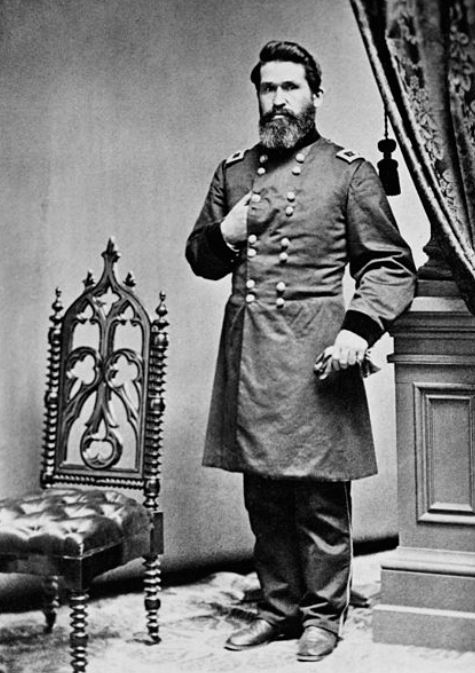
The battle resulted in a Union victory led by Major General James G. Blunt, who learned of Confederate forces’ withdrawal to Perryville after the Union’s victory at Honey Springs.
Confederate commanders Cooper and Watie had already left for Boggy Depot, leaving Brigadier General William Steele in charge of a rear guard.
12. Battle of Middle Boggy Depot (February 13, 1864)
Union Victory
The Battle of Middle Boggy Depot, also known as the Battle of Middle Boggy River, happened on February 13, 1864, in Choctaw Indian Territory, near present-day Allen in Pontotoc County, Oklahoma.
Union Colonel William A. Phillips led an expedition to divide Confederate forces in Indian Territory, with objectives including establishing Union control, offering amnesty, severing Confederate treaties, and gaining recruits.
The battle saw Union forces, comprising about 350 men and two howitzers from the 14th Kansas Cavalry, defeating a Confederate outpost led by Captain Jonathan Nail.
Aftermath included Phillips dividing his command, pursuing fleeing Confederates, and ordering destruction of Confederate and Chickasaw buildings.
The mistreatment of civilians and killings of wounded soldiers by Union troops contributed to Confederate resolve to continue fighting.
13. Ambush of the Steamboat J. R. Williams (June 15, 1864)
Confederate Victory
The ambush of the steamboat J.R. Williams during the American Civil War on June 15, 1864, in the Choctaw Nation (now part of Oklahoma) was a significant event, often termed as the “only naval battle” in Oklahoma.
Led by General Stand Watie, Confederate forces successfully attacked and destroyed the Union steamboat, impacting the supply lines of the Union Army.
The Union Army faced logistical challenges in regaining control of Indian Territory from the Confederates. Lack of infrastructure and control over roads made sustaining military operations difficult.
Confederate forces, mainly consisting of Cherokee, Choctaw, Chickasaw, and Creek Indians under General Stand Watie, ambushed the Union supply steamboat J.R. Williams on the Arkansas River.
Despite not altering the Civil War’s outcome, the attack boosted morale for Confederate supporters and prolonged a stalemate in the territory. Stand Watie’s reputation as a successful guerrilla raider was also enhanced.
14. Second Battle of Cabin Creek (September 19, 1864)
The Second Battle of Cabin Creek was a Confederate victory during the American Civil War in Indian Territory, resulting in the capture of a significant Federal wagon train by Confederate forces led by General Stand Watie and Brigadier-General Richard M. Gano.
Confederate Brigadier General Stand Watie devised a plan to attack central Kansas from Indian Territory. Watie’s plan involved raiding Union Army facilities and rallying Indian tribes in Western Kansas for an attack on the eastern part of the state.
The assault began at Cabin Creek on September 19, 1864, with Confederate forces engaging Union troops guarding a supply train. The Union forces, including black soldiers, suffered heavy casualties and lost equipment during the encounter. The Confederate artillery and cavalry strategically outmaneuvered and routed the Union forces.
The Confederate victory resulted in the capture of a Federal wagon train containing substantial supplies. The captured items included wagons, mules, commissary supplies, valued at around $1 million.
Further Reading
If you enjoyed this article, you may be interested to read more about the American Civil War events, Native Americans or read here for more general American history.

